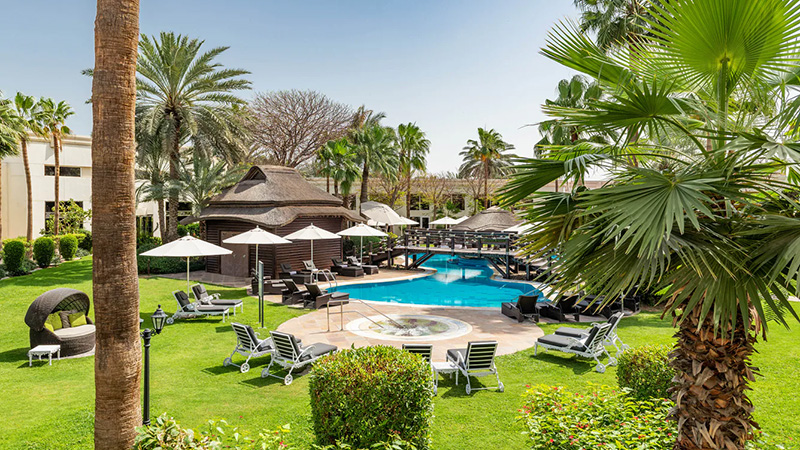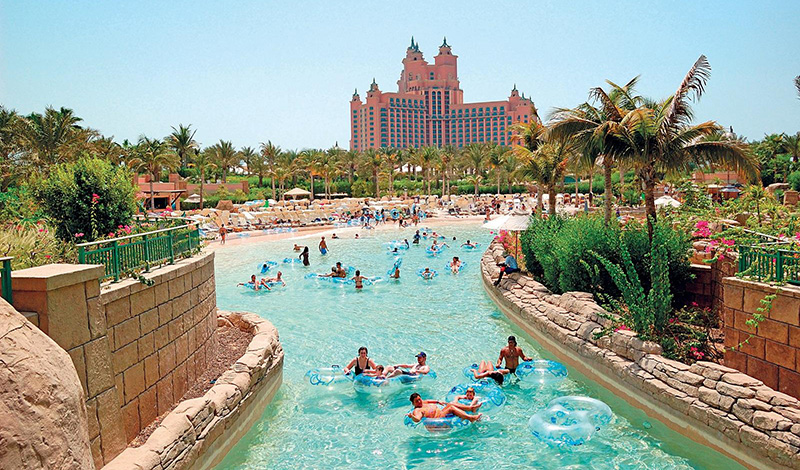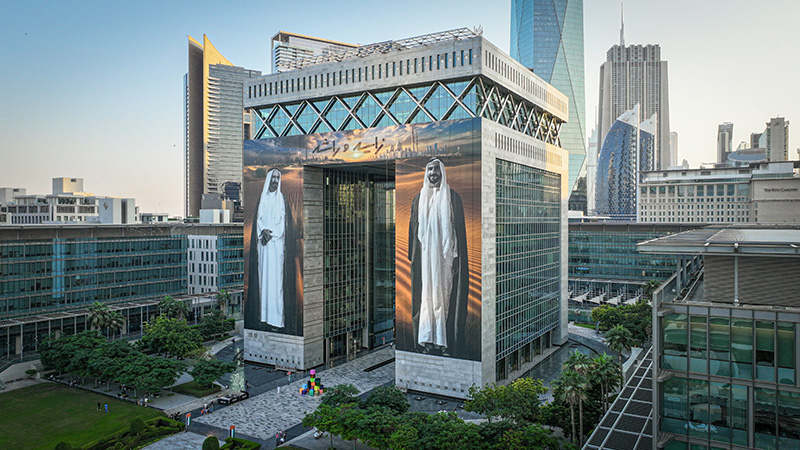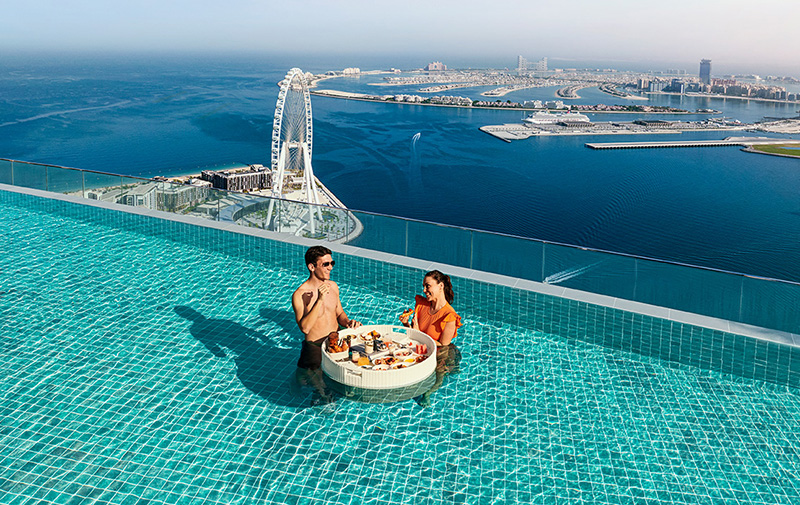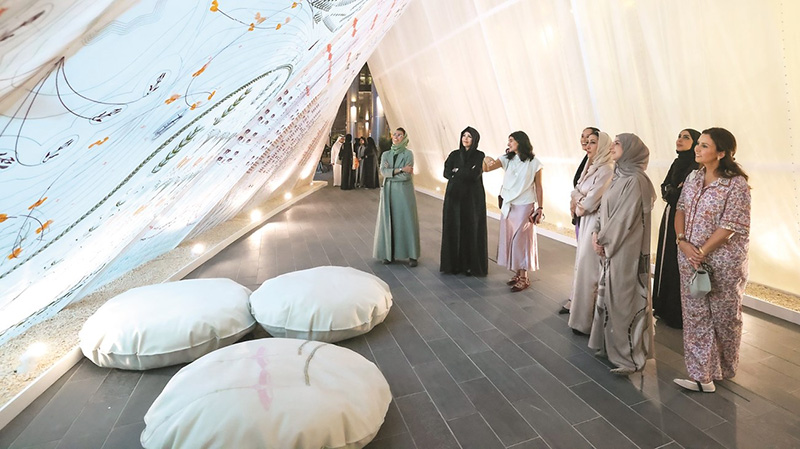
Throughout history, infrastructure has not merely mirrored existing economic activities but has often served as a powerful tool to reshape economic realities. Building a port in an empty desert, far from urban centers, represents not just an investment in trade movement but a profound understanding that value emerges from controlling the flow of commerce and redrawing market maps. Jebel Ali Port was not a reaction to immediate demand; it was a calculated, strategic response to the evolving nature of the global economy, where nations don’t merely adapt to trade networks but actively create them. This forward-thinking approach positioned Jebel Ali as a rebalancing force between East and West.
Origins and Vision
The Jebel Ali story began in the 1970s, at a time when the Middle East relied on a few traditional ports as key maritime hubs. Aden was a fueling station at the Bab el-Mandeb Strait; Beirut, known as the “Gateway to the Middle East” in the 1950s and 60s, served as a crucial trading point; Jeddah handled Saudi Arabia’s commerce and pilgrimage traffic; while Egypt’s Port Said and Alexandria were the arteries connecting the Suez Canal to the world. Over time, these ports faced challenges: wars, political instability, outdated infrastructure, and capacity limits. Amid this landscape, Dubai emerged with an audacious vision to fill the gap and create a modern maritime hub that could rise above these constraints. This is where the ambition of Dubai’s late ruler, Sheikh Rashid bin Saeed Al Maktoum, came into play. He envisioned a mega-port in the remote Jebel Ali desert, an idea that initially met widespread skepticism.
In 1976, Sheikh Rashid made the historic decision to lay the foundation stone for a colossal port 35 kilometers southwest of Dubai city. This came after Port Rashid, opened in 1972, had already reached capacity due to surging trade. Sheikh Rashid believed Dubai’s future hinged on a port that broke size and capability barriers. The choice of the Jebel Ali site signaled a commitment to transforming a barren desert into an industrial and commercial powerhouse. Despite initial doubts about the cost and remoteness, Dubai’s leadership pressed forward with meticulous planning and relentless work.
By the late 1970s, massive dredging and land reclamation works were underway to create deep berths and expansive quays from scratch. Notably, an entire new residential village was constructed to house the thousands of workers brought in for this mammoth endeavor. Within just three years, the dream materialized: in February 1979, Jebel Ali Port was officially inaugurated by Queen Elizabeth II. The port launched with around 15 berths, capable of handling some of the largest ships of its time, far surpassing its original specifications. It was envisioned as a complement to Port Rashid, effectively doubling Dubai’s cargo handling capacity and positioning the emirate on the global maritime map.
Initially, traffic at the newly built port was modest compared to its vast capacity, as the port was deliberately overbuilt to accommodate future growth. Yet Sheikh Rashid’s long-term vision soon proved right: cargo movement accelerated rapidly, confirming the wisdom of planning for the future rather than just the present. To further amplify Jebel Ali’s potential, Dubai established the Jebel Ali Free Zone (JAFZA) in 1985, right next to the port. Offering modern infrastructure and tax exemptions, JAFZA attracted hundreds of global companies, who set up offices, warehouses, and factories nearby to leverage the ease of import, export, and re-export. By the late 1980s, the synergy between the deepwater port and free zones had shattered the notion of a “desert port” with no purpose, transforming Jebel Ali into the Gulf’s primary trade gateway and propelling Dubai into decades of economic expansion.
Growth and Economic Engine
Over the following decades, Jebel Ali Port experienced extraordinary growth. Its facilities expanded continuously, adding new berths and cutting-edge cranes to meet rising demand. By the early 2000s, Jebel Ali ranked among the world’s busiest ports. In 2005, it handled approximately 7.6 million twenty-foot equivalent units (TEUs), making it one of the global top 10 container ports. Just two years later, it climbed to seventh place worldwide in terms of throughput. The port’s management kept pace by opening Container Terminal 2 in 2008, followed by the massive, semi-automated Terminal 3 in 2014. With these expansions, Jebel Ali’s capacity reached around 19 million TEUs annually by the mid-2010s, hitting a record 15 million TEUs handled in 2015.
Beyond numbers, the port’s physical scale is staggering. Covering an estimated 134 square kilometers, Jebel Ali boasts over 67 berths stretching 25 kilometers of shoreline. Often hailed as the world’s largest man-made harbor, it can accommodate the largest vessels afloat, from massive container ships and oil tankers to aircraft carriers. Notably, Jebel Ali is the most frequently visited port by the U.S. Navy outside the United States, thanks to its scale and strategic location. Regionally, it dominates the scene, handling a cargo volume comparable to several regional ports combined and serving a vast market of over 1.5 billion people across the Gulf, Middle East, Indian Subcontinent, and East Africa.
The economic impact of Jebel Ali is magnified by its integration with the adjacent free zone. By the late 2010s, JAFZA had attracted over 7,000 companies from more than 100 countries, compared to just 500 when it launched in 1985. This economic cluster includes industrial, technological, and logistics firms using the port as a regional hub to distribute products to surrounding markets. According to a 2019 Boston Consulting Group study, Jebel Ali Port and JAFZA together contributed about 33% of Dubai’s GDP and supported over 450,000 jobs, roughly one-sixth of the emirate’s workforce. The port handles around 40% of Dubai’s external trade, underscoring its role in diversifying the emirate’s economy and establishing Dubai as a global commercial center. As Sultan Ahmed bin Sulayem, Chairman of DP World (which operates the port), remarked, trade has always been Dubai’s growth engine, and Jebel Ali Port exemplifies how world-class ports drive national prosperity.
Resilience and Innovation
Jebel Ali’s journey has not been without challenges. After peaking in the mid-2010s, the port faced slight slowdowns due to regional economic shifts and intensifying competition. Still, it maintained robust throughput, consistently surpassing 14 million TEUs annually. The COVID-19 pandemic caused temporary disruptions, with throughput dipping to around 13.5 million TEUs in 2020-2021. However, the port quickly rebounded, reaching 14 million TEUs in 2022 and surging to a record 15.5 million TEUs in 2024, its highest annual volume in nearly a decade, marking a 7% year-on-year increase. This performance reinstated Jebel Ali among the world’s top 10 container ports. Notably, the port’s 2024 TEU figure accounts for about 18% of DP World’s global port network activity, which spans over 90 terminals worldwide. Additionally, the port handled record volumes of general and bulk cargo in 2024, exceeding 5.4 million metric tons, including industrial equipment, construction materials, and renewable energy components.
Jebel Ali’s current handling capacity stands at approximately 19.4 million TEUs across four terminals and over 100 berths, leaving room for near-term growth without major bottlenecks. Plans are underway to complete a fourth terminal, which will boost capacity beyond 22 million TEUs annually, ensuring the port’s ability to meet future demand.
Human Dimension and Global Impact
Jebel Ali is not merely an economic machine; it is a human and social story about how infrastructure can reshape the destiny of a city and nation. Thousands who have worked on and within the port over the decades have found livelihoods and built a vibrant, multicultural community. What was once a quiet desert strip has transformed into a bustling hub, reflecting the power of long-term vision and planning to alter lives and landscapes. The port and its surrounding free zone have fostered a diverse economic ecosystem where nationalities from around the globe work side by side, embodying the human mosaic brought about by globalization.
Innovation has been a constant pillar at Jebel Ali. The port has served as a testing ground for cutting-edge technologies, from automated cranes and digital management systems to the groundbreaking BoxBay vertical container storage system, which stacks containers up to 11 stories high in automated racks, boosting yard capacity while cutting energy use. Autonomous vehicles are being rolled out to transport containers within the port, supported by advanced digital platforms coordinating logistics operations.
Jebel Ali’s influence extends beyond commerce into humanitarian realms. The relocation of Dubai’s International Humanitarian City near the port has significantly enhanced emergency response capabilities. Thanks to proximity to Al Maktoum International Airport, humanitarian aid can be shipped by air or sea within hours, allowing agencies like the UNHCR to reach crisis zones within 72 hours. Dubai, through Jebel Ali and its logistics hubs, has emerged as a pivotal player in the global relief network, dispatching shelter materials, medical supplies, and food aid worldwide. This humanitarian role highlights that ports are not solely profit-driven entities but can be lifelines for global solidarity and compassion.
Challenges and Adaptation
In today’s global trade environment, Jebel Ali faces both promising opportunities and persistent challenges. Domestically, the UAE is enhancing connectivity through projects like the national railway network, set to link the port with Gulf markets and cement Jebel Ali’s status as a multimodal hub. Internationally, initiatives like China’s Belt and Road underscore Dubai’s ports as critical regional junctions bridging East and West. Yet competition is intensifying: emerging regional ports such as Saudi Arabia’s King Abdullah Port on the Red Sea and Oman’s Salalah and Duqm ports are vying for transshipment and regional trade flows. Furthermore, the maritime industry is evolving rapidly, with larger container ships, shifting trade patterns, and geopolitical shifts requiring Jebel Ali to stay ahead. Global economic volatility, from financial crises to fuel price spikes, adds further complexity.
To navigate these dynamics, Jebel Ali has adopted flexible strategies, diversifying beyond container traffic into general cargo, vehicles, and project materials. It has invested heavily in digital infrastructure and data management platforms to streamline operations and boost supply chain transparency. At the same time, workforce development remains a priority, ensuring personnel are equipped to handle advanced technologies. As Greek shipping magnate Aristotle Onassis once said, “We must free ourselves from the hope that the sea will ever rest. We must learn to sail in high winds.” This philosophy underpins Jebel Ali’s approach to resilience, emphasizing adaptability and forward planning to ensure the port remains a stable anchor amid turbulent global waters.
Sustainability and Future Outlook
As the world moves toward stricter environmental standards, Jebel Ali is stepping up to become a green port leader. The port is implementing carbon-reduction initiatives, including transitioning to more efficient, less polluting equipment and adopting clean energy sources. Solar power is set to play a bigger role, alongside the use of biofuels and electric vehicles for internal transport. Technologies like the BoxBay system not only boost capacity but also cut energy consumption and land use. With the maritime shipping industry shifting toward cleaner fuels, such as LNG and low-sulfur fuel, Jebel Ali is modernizing its infrastructure to accommodate next-generation vessels and their requirements. The port also engages in regional and global initiatives to preserve marine environments, ensuring that economic growth aligns with environmental responsibility.
Looking ahead, Jebel Ali is pursuing strategic investments to maintain its world-class status. Beyond expanding physical capacity, the port is focused on achieving full digital transformation, integrating advanced technologies into every aspect of operations from vessel management and berth scheduling to customs and logistics services. This transformation will enhance speed and transparency, making Jebel Ali even more attractive to global shipping lines and businesses. Continued government support, through open trade policies and infrastructure investments, will help secure Jebel Ali’s position as a vital gateway connecting Asian supply chains to Middle Eastern, African, and other emerging markets. As developing economies rise, the port will play a growing role in integrating them into the global trade system by providing a reliable, efficient access point to international markets.
Ultimately, the story of Jebel Ali Port is more than a chronicle of maritime infrastructure; it is an economic, human, and philosophical saga about the power of vision, strategy, and determination to reshape geography and chart new economic paths. From a daring idea born in the desert in the 1970s to a firmly established place among the world’s top ports today, Jebel Ali embodies the principle that human ingenuity and innovation can quite literally move the world, connecting nations, economies, and people across a shared global future.


